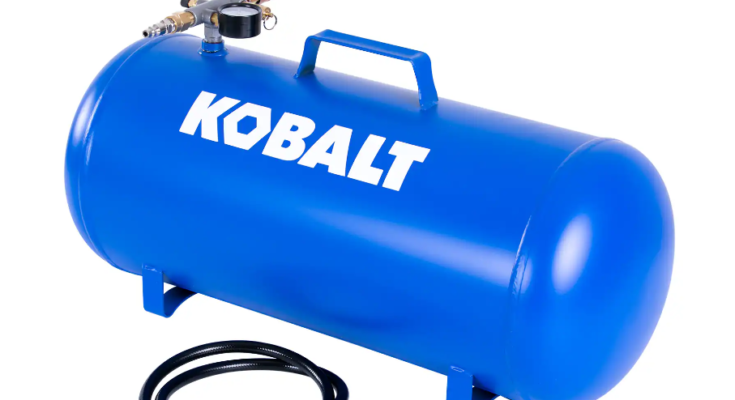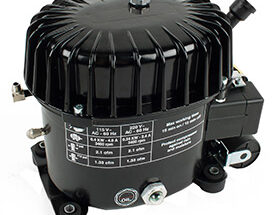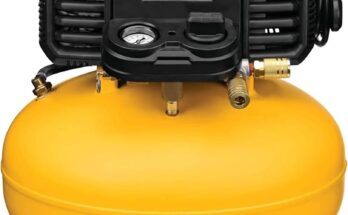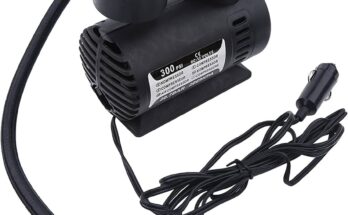Many people think that air compressor tanks are just simple metal containers that hold air, but there’s so much more to them. An air compressor tank plays a vital role in the overall performance and efficiency of your air compressor system. By understanding its function and maintaining it properly, you can significantly boost its lifespan and efficiency. Let’s dive into the world of air compressor tanks and discover how you can get the most out of yours.
Understanding Your Air Compressor Tank
Types of Air Compressor Tanks
First things first, not all air compressors tanks are created equal. There are several types of tanks you might come across, and choosing the right one for your needs is crucial. Here are some common types:
- Horizontal Air Tanks – These are the most common types and are generally used in stationary air compressors. They’re great for workshop environments where space isn’t a huge issue.
- Vertical Air Tanks – If you’re short on floor space, a vertical air tank might be your best bet. They take up less room and are often used in more compact settings.
- Portable Air Tanks – These are small, lightweight tanks that are easy to move around. Perfect for jobs that require mobility.
- Auxiliary Air Tanks – These tanks are used to increase the capacity of your existing compressor system. They can be very handy if you frequently run out of air during your tasks.
By understanding the different types, you can better decide which air compressors tank suits your needs best.
Key Components of an Air Compressor Tank
Knowing the parts of your air compressors tank can help you understand how it works and how to maintain it properly. Here are the key components:
- Tank Body – This is the main chamber that holds the compressed air. It can be made from various materials, including steel and aluminum.
- Pressure Gauge – This shows the pressure level inside the tank. Keeping an eye on this gauge is crucial for safety and efficiency.
- Safety Valve – This is a critical safety feature that releases air if the pressure gets too high, preventing potential explosions.
- Drain Valve – Moisture can build up inside the tank over time, so the drain valve is used to release this excess water and prevent rust.
- Regulator – This controls the air pressure coming out of the tank, allowing you to adjust it according to your needs.
Understanding these components will help you better maintain and troubleshoot your air compressors tank.
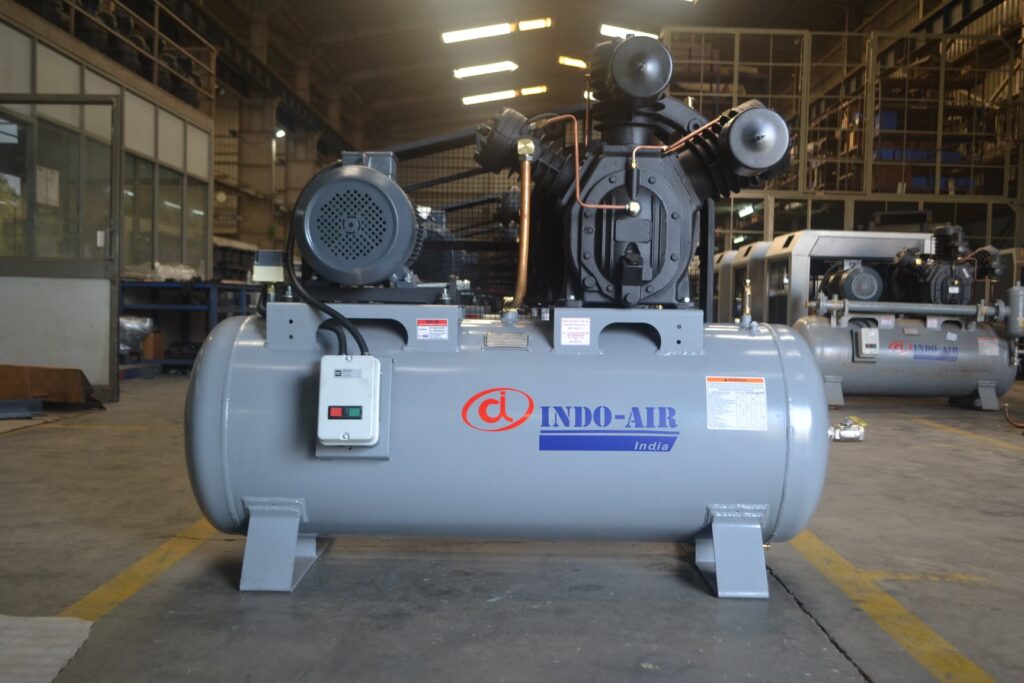
Photo By: indoair.com
Importance of Choosing the Right Air Compressor Tank
Choosing the right air compressors tank is crucial for optimal performance. Here are a few reasons why:
- Efficiency – The right tank size and type can ensure that your air compressor runs efficiently. A tank that’s too small may not provide enough air for your tasks, while a tank that’s too large can be a waste of space and resources.
- Safety – Using the appropriate tank for your compressor system reduces the risk of accidents. A mismatched tank can lead to pressure issues and potential hazards.
- Longevity – A well-matched tank and compressor system can extend the lifespan of both components, saving you money in the long run.
By taking the time to choose the right air compressor tank, you’re setting yourself up for better performance and fewer headaches down the road.
Proper Maintenance of Air Compressor Tank
Contrary to popular belief, air compressor tanks don’t just take care of themselves. Many people think you can just set it up and forget about it, but that’s a sure way to shorten your tank’s lifespan and decrease its efficiency. Proper maintenance is key to keeping your air compressor tank in top shape and ensuring it performs at its best.
How to Maintain Air Compressor Tank
Regular maintenance can prevent many common issues that can arise with your air compressor tank. Here’s how to keep your tank running smoothly:
- Regular Inspections – Make it a habit to inspect your air compressor tank regularly. Check for any signs of wear and tear, rust, or damage. If you spot any issues early, you can address them before they become major problems.
- Cleaning the Tank – Over time, dirt and debris can build up inside your air compressor tank. Regularly cleaning your tank helps to prevent this buildup and keeps your tank functioning efficiently. Use a mild detergent and water to clean the tank, and make sure to dry it thoroughly to prevent rust.
- Draining the Tank – One of the most important maintenance tasks is regularly draining the tank. Moisture can accumulate inside the tank, leading to rust and corrosion. Use the drain valve to release any built-up water and moisture. Doing this daily, especially if you live in a humid area, can significantly extend the life of your tank.
- Checking the Pressure Gauge and Safety Valve – Ensure that the pressure gauge is working correctly and shows the accurate pressure levels. The safety valve is also crucial as it prevents over-pressurization, which can be dangerous. Test the safety valve periodically to make sure it’s functioning properly.
- Preventing Rust in Air Compressor Tank – Rust is the enemy of air compressor tanks. In addition to regular cleaning and draining, consider using a rust inhibitor or corrosion-resistant coating to protect the inside of your tank. This can add years to the life of your tank.
By following these maintenance tips, you can keep your air compressor tank in excellent condition and avoid many common issues.
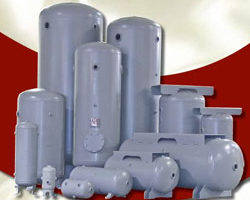
Photo By: compressedairsystems.com
Optimizing Air Compressor Tank Pressure
A lot of folks believe that just cranking up the pressure on their air compressor tank will get the job done faster. However, this can actually harm your equipment and reduce efficiency. Optimizing your air compressor tank pressure is essential for both safety and performance.
Ideal Air Compressor Tank Pressure Settings
Finding the right pressure setting for your air compressor tank depends on the tasks you’re performing. Here are some general guidelines:
- Light Duty Tasks – For tasks like inflating tires or small pneumatic tools, a lower pressure setting (around 90-100 PSI) is usually sufficient. This ensures you’re not using more air than necessary, saving energy and wear on your tank.
- Medium Duty Tasks – For jobs like spray painting or using larger tools, you might need a pressure setting between 100-120 PSI. This provides enough power without overloading your system.
- Heavy Duty Tasks – For industrial applications or heavy-duty tools, higher pressure settings (above 120 PSI) may be required. However, always consult your equipment’s manual to avoid exceeding safe pressure limits.
How to Safely Adjust and Manage Pressure in Your Air Compressor Tank
- Using the Regulator – Your air compressor tank should have a regulator that allows you to adjust the pressure. Turn the regulator knob to set the desired pressure for your task. Make sure to check the pressure gauge to confirm the setting.
- Monitoring the Pressure Gauge – Keep an eye on the pressure gauge while you’re working. If you notice the pressure dropping or spiking unexpectedly, it could indicate a problem that needs attention.
- Safety Precautions – Never exceed the maximum pressure rating of your tank. Doing so can cause the tank to rupture or fail, posing serious safety risks. Always follow the manufacturer’s guidelines for safe pressure levels.
Benefits of Maintaining Proper Pressure Levels
- Efficiency – Maintaining the right pressure levels helps your air compressor tank work more efficiently. This means you get the job done quicker and with less energy.
- Safety – Proper pressure management reduces the risk of accidents and equipment failure. It ensures that your tools and accessories operate within safe limits.
- Longevity – By keeping the pressure at optimal levels, you reduce the strain on your air compressor tank. This can significantly extend the lifespan of your equipment.
Optimizing and maintaining the correct pressure in your air compressor tank is a simple but effective way to enhance performance and safety.
Pros and Cons of Optimizing Air Compressor Tank Pressure
Optimizing your air compressor tank pressure has numerous advantages. It enhances efficiency, reduces energy consumption, and improves the overall performance of your equipment. Additionally, maintaining proper pressure levels increases the safety of your operations and extends the lifespan of your air compressor tank.
On the downside, optimizing pressure settings can be time-consuming, especially if you’re frequently switching between different tasks that require different pressure levels. You also need to stay vigilant about monitoring the pressure gauge and adjusting the regulator. However, these minor inconveniences are a small price to pay for the significant benefits.
Final Verdict on Air Compressor Tank Pressure Optimization
Optimizing the pressure in your air compressor tank is crucial for efficiency, safety, and longevity. While it requires attention to detail and a bit of extra effort, the payoff is well worth it. By maintaining the right pressure levels, you ensure that your air compressor tank performs at its best, lasts longer, and keeps you safe.
FAQs About Air Compressor Tanks
1. How often should I inspect my air compressor tank?
It’s a good idea to inspect your air compressor tank at least once a month. Look for any signs of wear and tear, rust, or damage. Regular inspections help catch issues early and keep your tank in top condition.
2. How do I clean my air compressor tank?
Cleaning your air compressor tank is simple. Use a mild detergent and water to wash the inside of the tank. Rinse it thoroughly and dry it completely to prevent rust. Make sure to clean your tank regularly to avoid dirt and debris buildup.
3. Why is it important to drain my air compressor tank?
Draining your air compressor tank removes moisture that can accumulate over time. This moisture can cause rust and corrosion, which can damage your tank and reduce its efficiency. Draining the tank daily, especially in humid areas, helps extend its lifespan.
4. What is the ideal pressure setting for my air compressor tank?
The ideal pressure setting depends on the task at hand. For light-duty tasks, 90-100 PSI is usually enough. Medium-duty tasks might require 100-120 PSI, and heavy-duty tasks might need over 120 PSI. Always check your equipment’s manual for the recommended pressure settings.
5. How do I adjust the pressure on my air compressor tank?
Use the regulator on your air compressor tank to adjust the pressure. Turn the regulator knob to set the desired pressure, and check the pressure gauge to confirm the setting. Make sure to never exceed the maximum pressure rating of your tank.
6. What should I do if my air compressor tank is leaking?
If you notice a leak, first, turn off the compressor and release all the air from the tank. Inspect the tank to locate the leak. Small leaks can sometimes be patched with a tank repair kit, but significant leaks may require professional repair or tank replacement.
7. How can I prevent rust in my air compressor tank?
To prevent rust, regularly drain the tank to remove moisture. You can also use a rust inhibitor or corrosion-resistant coating to protect the inside of the tank. Keeping your tank clean and dry is key to preventing rust.
8. Is it safe to use an air compressor tank indoors?
Yes, it’s safe to use an air compressor tank indoors, but ensure the area is well-ventilated. Also, follow all safety guidelines and keep the tank away from flammable materials. Regularly inspect the tank and equipment to ensure everything is in good working order.
9. Can I increase the capacity of my air compressor tank?
Yes, you can increase the capacity by adding an auxiliary air tank. This additional tank connects to your existing compressor system and provides extra air storage, which can be helpful if you frequently run out of air during your tasks.
10. How do I know when it’s time to replace my air compressor tank?
If your tank has significant rust, leaks, or damage that can’t be repaired, it’s time to replace it. Also, if the tank frequently fails safety inspections or shows signs of reduced efficiency, a replacement might be necessary to ensure safe and optimal performance.
11. What are the benefits of maintaining proper pressure levels in my air compressor tank?
Maintaining proper pressure levels helps your air compressor tank work efficiently, reduces energy consumption, and minimizes wear and tear. It also enhances safety and extends the lifespan of your tank and equipment.
12. How do I choose the right air compressor tank for my needs?
Consider the type of tasks you’ll be performing, the space available, and the compressor’s specifications. Horizontal tanks are great for workshops, vertical tanks save space, portable tanks offer mobility, and auxiliary tanks increase capacity. Choose a tank that fits your specific requirements.
13. Why is it important to check the pressure gauge and safety valve regularly?
Regularly checking the pressure gauge ensures your tank is operating at the correct pressure, which is crucial for efficiency and safety. Testing the safety valve prevents over-pressurization, which can be dangerous. These components are essential for maintaining safe and optimal operation of your air compressor tank.
14. How can I improve the efficiency of my air compressor tank?
Regular maintenance, such as cleaning, draining, and inspecting your tank, helps improve efficiency. Optimizing the pressure settings for specific tasks also ensures you’re not using more air than necessary. Using the right accessories and fittings can further enhance performance.
15. What safety precautions should I take when using an air compressor tank?
Always follow the manufacturer’s guidelines for safe operation. Keep the area well-ventilated, avoid exceeding the maximum pressure rating, and regularly inspect the tank and safety components. Use the tank away from flammable materials and ensure all fittings and hoses are secure.
